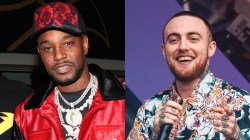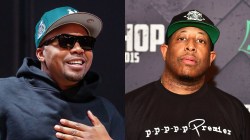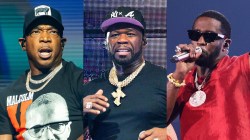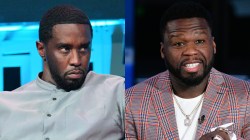Historically, my experiences with the competitive deejaying circuit haven’t been the best. I’ve heard so many incredible stories and seen amazing videos of guys in the Disco Mix Club [DMC] battles, which really generated my interest in creative deejaying. Having seen guys like Rob Swift and Z-Trip on stage together at an event in Pittsburgh where for a moment they shared a turntable set, each scratching on a separate turntable that ran through the same mixer, I was jaw-droppingly impressed. It’s hard to imagine the coordination and expertise that made them capable of spontaneously doing such a thing. So, I had high regards for the experts, but my thoughts on the competitive deejaying world could be summed up in one word—stale. I recall being excited for a deejaying battle at the A3C Festival in Atlanta in 2010. But as I stood near the front of the stage as a spectator, I walked away bored and unimpressed. Even if they were doing the same things that I had previously been amazed by in YouTube videos, seeing it live was nothing new. The excitement that comes with witnessing an innovative idea or new expression coming to life was missing.
So why do you care what I think about deejaying or how that fits within the context of Hip Hop? As fans of the music and culture, we’ve all been subjected to the horrible experience of celebrity deejaying—the worst example being Paris Hilton’s short-lived career behind the ones and twos. And with the advent of CDJ technology, Serato, as well as Hip Hop’s recent embrace of Electronic Dance Music, the definition and roles of deejays are evolving.
Blending Genres In The Competitive Deejay Circuit
“I came up in the era where there weren’t Hip Hop deejays or Reggae deejays, you were just a deejay and you had to play everything,” said Jazzy Jeff at the East Coast Regional leg of the Red Bull Thre3Style battle event in Philadelphia. “You can have all the right songs and play them the wrong way. So, it’s not just picking the songs—it’s how long do you let them play, what parts do you let play, how do they segue. Does it make sense? Does it tell a story…does it create an emotion?”
Jeff has performed on stage with the Fresh Prince, among others, rocked clubs and parties as a solo DJ, and has expressed an appreciation for the technical skills that are studied by most deejays who embrace the art form as a profession.
Hell, I can hardly cut a record nice with my hands. So if somebody can do it with his or her nose or other extremity I’m impressed. What the Thre3Style competition does is continue to incorporate these popular tricks that will make the collective audience say, “Wow,” but they also put an emphasis on a deejay’s ability to make a crowd dance. So I hit Thre3Style with hopes of seeing that YouTube type of excitement translate into a live action platform. Like competitions in the past, they continue to judge deejays on their technical skills, but they have added criteria that requires the competing deejays to develop a strong ability to engage the audience.
“You know, the deejay battle world got pretty stale about ten years ago,” stated A-Trak, who also attended the East Coast Regionals in Philadelphia. “It seems like deejays kind of ran out of things to do for a little while. But in the meantime, the art of the mix itself and record selection progressed. It seems like now there’s sort of this new crossroads, where deejays can combine a temporary type of selection with techniques that still evolved over the years, and have a fresh approach to make it all gel together.”
A-Trak entered the field of competitive turntablism at just 15 years old. He competed in the DMC World DJ Championships and became the competition’s youngest winner in 1997. In recent years, he’s garnered recognition as Kanye West’s tour deejay and as a founder of the Fool’s Gold Records label. It’s just another example of the aforementioned evolution of deejaying both within Hip Hop music and culture.
Hip Hop’s Reciprocal Link Between Deejays & Emcees
With Hip Hop established as a mainstay atop Billboard charts and in mainstream music, we’ve seen many artists collaborating with the proven party-rocking deejays—essentially validating each other to their respective audiences. A rapper can give a deejay access to millions of followers and fans, while a deejay can give a rapper’s song the extra push it needs to become a successful club or radio single. The recent collaboration between A$AP Rocky and popular Dubstep contributor Skrillex, “Wild For the Night,” appears mutually beneficial. Skrillex is largely being introduced to the millions of fans that Rocky has accumulated, while Rocky has crafted another club-friendly single created at the guise of Skrillex.
The accompaniment of a deejay has proven to be a commodity for Hip Hop artists from the ground level to the peak of their success. Some semblance of Wiz Khalifa’s progress over the years can be accredited to his teaming up with his official tour deejay, Bonics. Prior to Khalifa’s breaking through to international stardom, he faced the challenge of engaging fans in his hometown. Bonics had established himself as Pittsburgh’s top urban deejay on radio and in clubs; he was a go-to call for any Hip Hop shows that came through the city. With Bonics’ support, a youthful Khalifa earned radio airplay and opening performance slots when many national acts made their way through the city. The relationship has helped both in their careers, as Bonics’ reputation in Pittsburgh helped Khalifa early on and Khalifa’s on-going success has led to Bonics touring the world and becoming a more widely recognized name. Still, Bonics recognizes his role and the impact he has at tour-stop performances with Khalifa.
“I’m the first person that says anything on the microphone during a Wiz show,” Bonics explained. “The truth is that you are on stage and people are watching you. Entertain them…they paid money to get in!”
He continued on his responsibility as a deejay to grab the attention of the audience: “When I say it, I say it with conviction, ‘Make some motherfucking noise!’ And they listen. You can translate that into body language as well, even just putting your hands up and doing the ‘come on’ sort of body motion. But you have to believe in that. You can’t just get up there and half-ass it and think they’re gonna fuck with you.”
Reconciling Hip Hop’s Foundations With Corporate Tie-Ins
At times, Hip Hop has been very insular about large corporations participating in the culture. We all remember how corny Memphis Bleek looked rhyming about shampoo on that “Garnier Fructis Flow” video. But, when executed properly—like Run-DMC’s groundbreaking deal with Adidas—a corporate hand isn’t the worst thing in the world. And while some traditionalists still justifiably frown upon Serato, Hip Hop (particularly deejaying) was founded upon technical innovation. So there’s always a balance to be struck.
“I had to learn the hard way,” offered veteran turntablist and producer Z-Trip. “The technology wasn’t there. You know, you’ve got guys who are up there now deejaying with computers and having the ability to make edits of their own things and craft their sets a little better. For me it was a little harder, because I was dealing with records that I couldn’t really move around.
“There’s this sway of trying to make sure you can lock into each groove and make another groove out of it,” he added about mixing and blending music. “Those are the things that helped me learn and figure it out, but things are much different now. To be honest though, I’m glad I learned that way, because it helped me really fine-tune my ear where I can get out of any situation. You can throw me any song and I can mix my way out of it. Thank God.”
As a writer, I got involved with the Red Bull Thre3Style this year, as a spectator and to document their relationship with my hometown of Pittsburgh and the city’s deejays via the Pittsburgh City Paper. After covering the qualifier event in Pittsburgh, I was invited by Red Bull to attend the East Coast regional event in Philadelphia, where the winner of the Pittsburgh qualifier advanced. He placed third in Philly and did not advance to the national championship. And before you ask, no Red Bull is not paying me.
Ultimately, I think an event like Thre3Style is good for Hip Hop. There is a bit of a corporate element, and there has been a large, illuminated Red Bull sign behind the deejays on stage. But there’s not an overwhelming amount of mentions of the brand or implementation of the brand into the mixes. And if we’ve learned anything from the campaign to preserve 1520 Sedgwick Avenue—home of the rec room where Hip Hop pioneer DJ Kool Herc helped introduce the concept of deejaying as we know it—it’s that a non-intrusive corporate boost can be helpful. Look at what happened to Fat Beats.
An event like Thre3Style isn’t going to prevent you from getting bombarded by Ludacris or another emcee throwing David Guetta or Swedish House Mafia on their album. And Serato along with the celebrity deejaying culture it enables is likely here to stay. Believe it or not, Serato is now one of the official sponsors of the DMC competition. But deejaying is one of the original elements of Hip Hop, so a corporation like Red Bull investing in it is in itself creating awareness for the culture by exposing it on a high international scale. They’re also taking some of Hip Hop’s best—like DJ Jazzy Jeff, A-Trak, and Z-Trip—and putting them on a platform as expert judge for the competition.
Rory D. Webb is a Pittsburgh, PA native who has closely documented his local Hip Hop scene and has been writing with HipHopDX since 2011. Follow him on Twitter @RoryDWebb.



![Method Man Admits He Didn't Like Drake's "Wu-Tang Forever": "I [Wasn't] Getting On That"](https://hiphopdx.com/wp-content/uploads/2025/12/method-man-drake-wu-tang-forever-remix.jpg?w=250)






DEEEEEEEEEEEEE JAAAYYYYYYYYYYYYYYYY KHALEEEEEEEEED WEEEE THAAA BESSTTTTTT
Typo in the first sentence, nice.
Very good article although I’d be interested to read about the political side of getting selected for the thre3style. Maybe research into how the only DJ’s selected are based on the size of guest list they contribute. Also since you were at the East Coast finals, a paragraph or two on how DJ Trayze was robbed would be appropriate.
What is this article even saying? It sounds like it was written by a highschooler who’s trying to sound like an intellectual. It’s presumptious and arrogant. Fire the writer.
The DE-Evolution of the deejay is more like it
A laptop, I tunes and a PA does NOT make a DJ
Just like a couple corny punch lines does not make an emcee
I AM HIP HOP